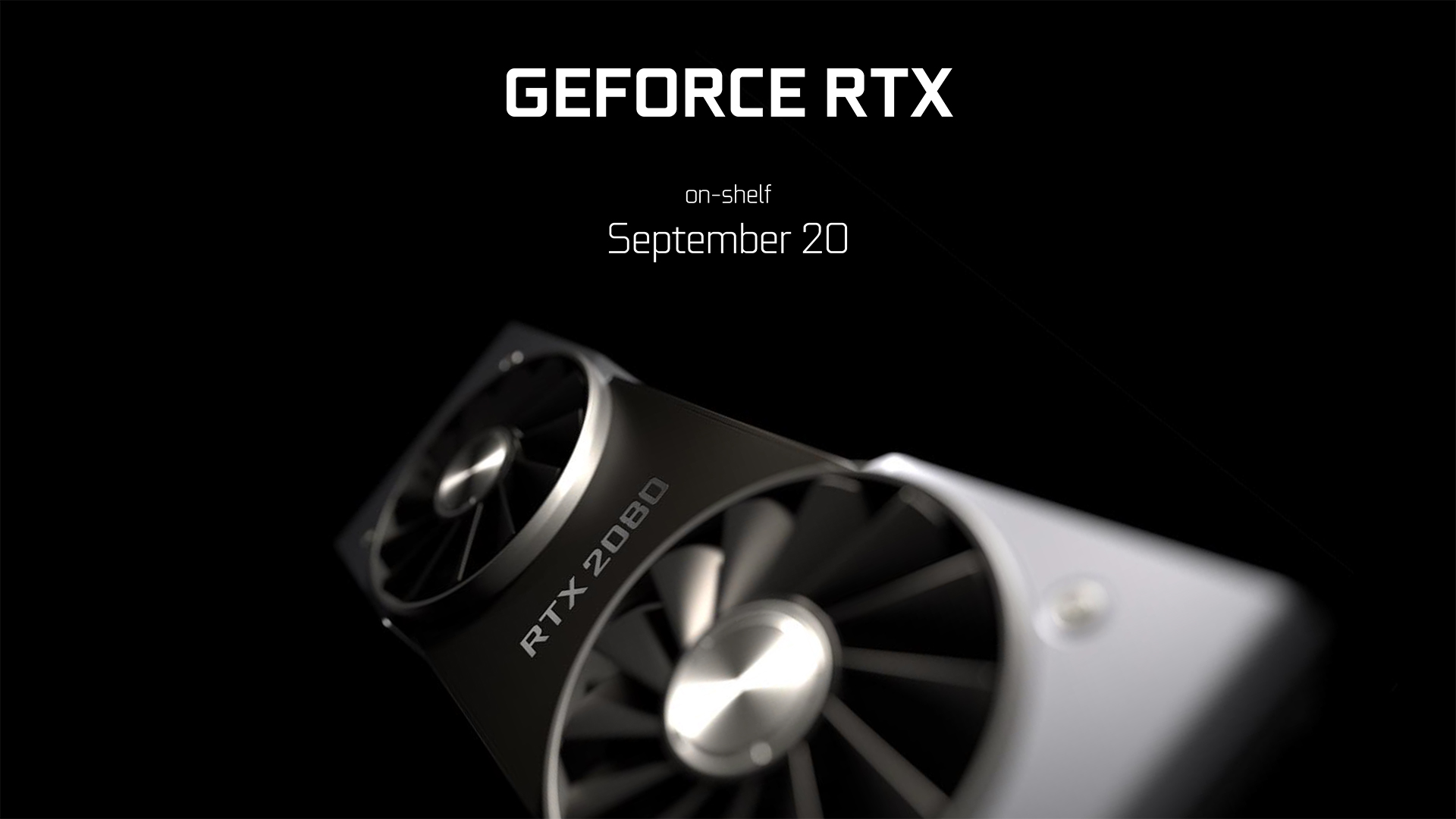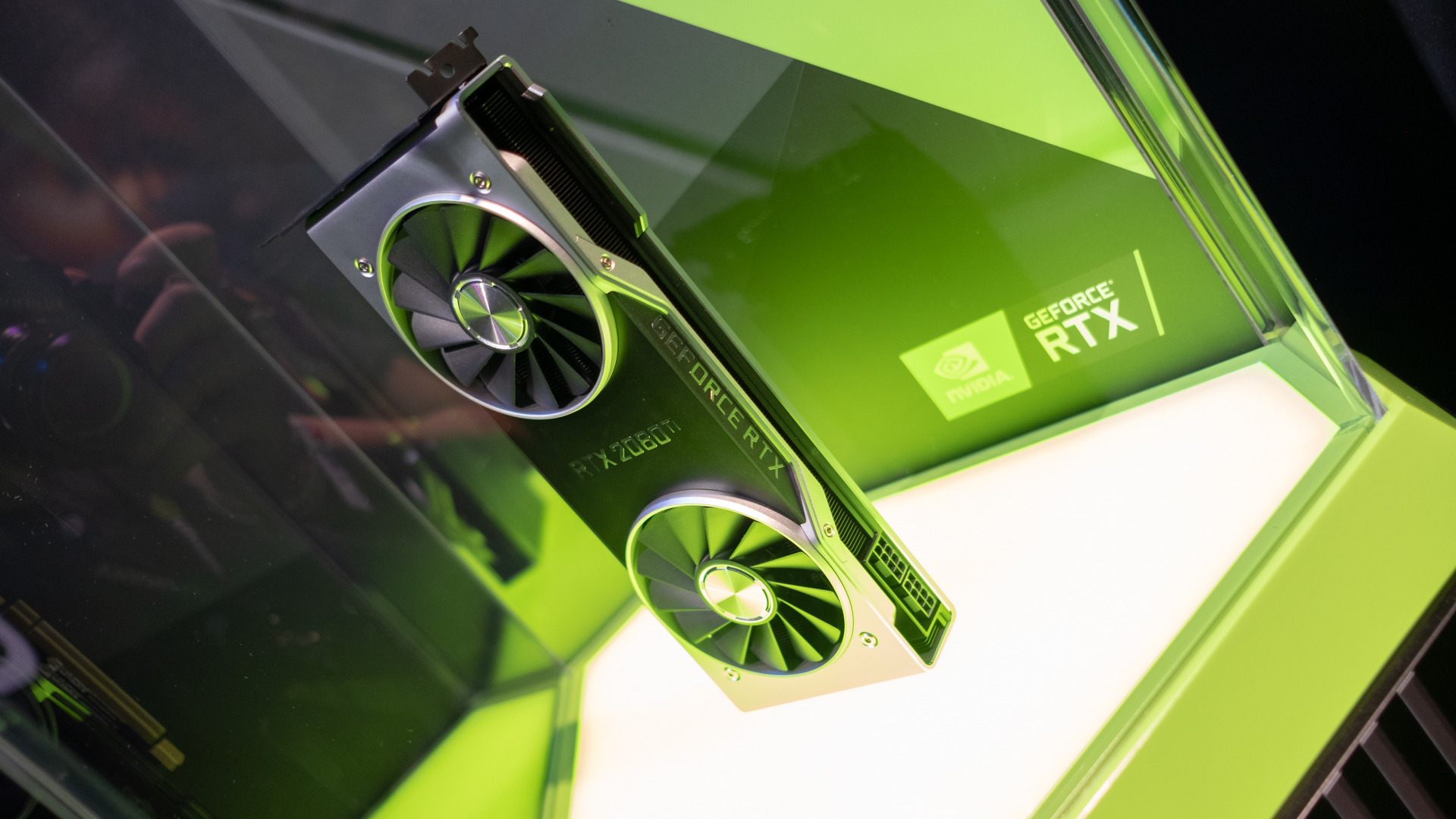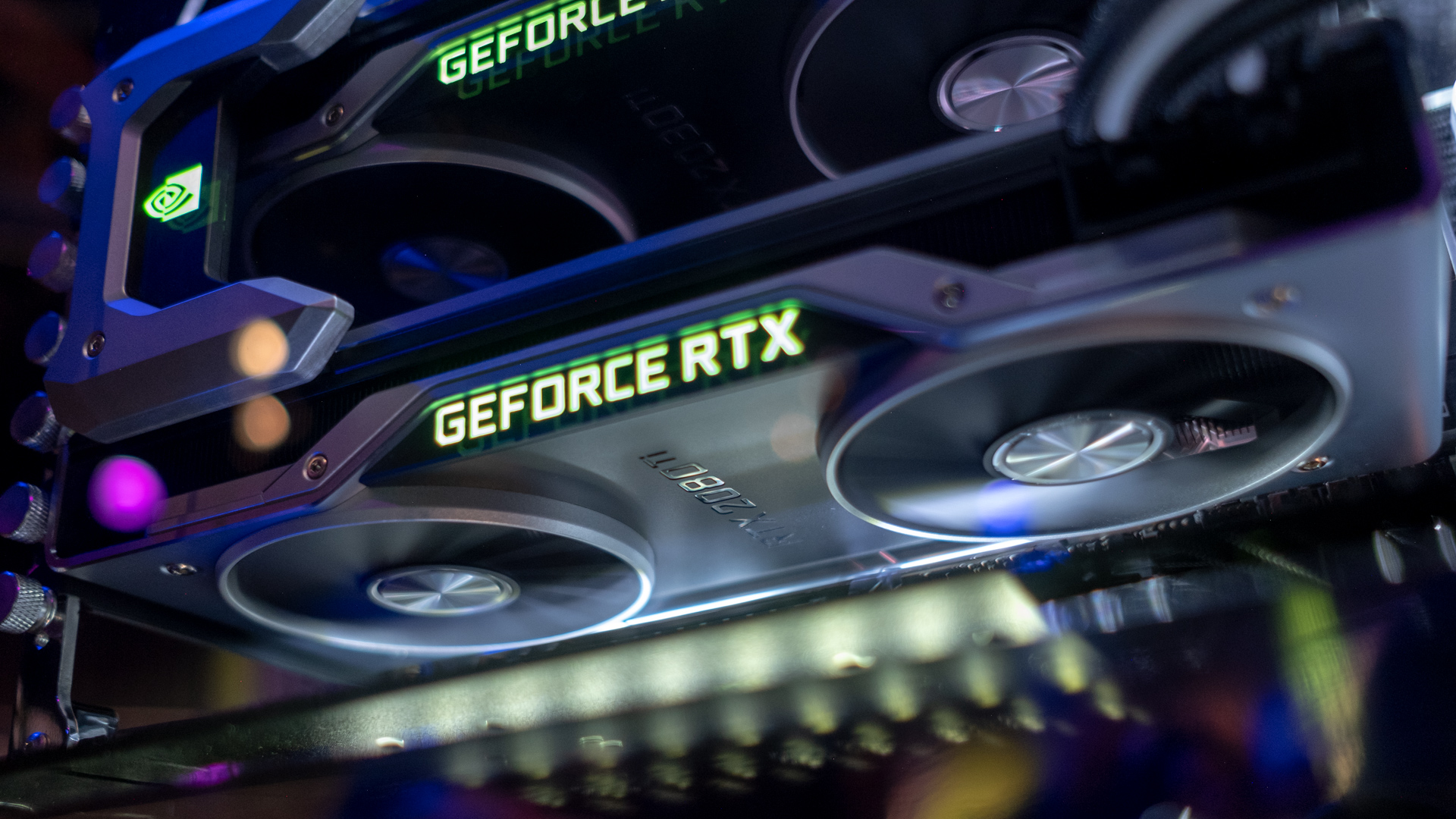The wait for Nvidia’s next-generation Turing graphics cards was excruciating. However, the latest and greatest GPU architecture have powered our graphics needs for quite sometime now, and we must say that the sheer power of Nvidia Turing was definitely worth the long wait.
Now that we finally have Turing-powered Nvidia GeForce RTX 2080 Ti, RTX 2080, RTX 2070 and RTX 2060 cards in our hands, we know they’re the best graphics cards for the games we’ll be playing for the next few years. And, that’s without factoring in Nvidia’s Super RTX cards, which are also out now. Nvidia Turing will be behind some creative work too, thanks to the recently introduced Nvidia Titan RTX.
Nvidia Turing is all about the real time ray tracing, taking this long-awaited graphics technology to the mainstream. This brings about a graphical revolution in the way the best PC games are rendered. And, judging by high-profile games like Metro Exodus and Shadow of the Tomb Raider, that revolution has begun – especially considering you can enable ray tracing on non-RTX cards (to the tune of a major performance hit).
Of course, there are Nvidia Turing cards out there for people that don’t need the unique RTX tech. Nvidia released the GeForce GTX 1660 Ti, GeForce GTX 1660 and GeForce GTX 1650 for that purpose. They’re not quite as powerful as their ray tracing cousins, but they’re significantly more affordable. Additionally, Nvidia officially announced its mobile Turing graphics processors, along with a ton of laptops equipped with them.
Cut to the chase
- What is it? Nvidia’s latest graphics card architecture
- When is it out? Out since September 20
- What will it cost? $ 599 (£569, AU$ 899) – $ 10,000 (£7,830, AU$ 13,751)

Image Credit: Nvidia
Nvidia Turing release date
All of the currently-announced Nvidia Turing GPUs are now out in the wild – from the GTX 1660 and 1660 Ti to the RTX Super cards, RTX 2060 Super and RTX 2070 Super. Well, that is, except for the RTX 2080 Super, which doesn’t come out until the 23rd. Thankfully, the RTX-series cards are readily available now after some initial limited availability. Additionally, thanks to the release of the newer cards, you’ll likely find more than a few older models on sale every day.
At CES 2019, we didn’t just finally get an RTX 2060 announcement, but also over 40 gaming laptops sporting the mobile version of Nvidia RTX graphics. These days, the best gaming laptops, alongside the ones we saw at CES 2019 like the Alienware Area 51m, are all packing the latest Nvidia Turing graphics.
And, we’re sure that they’ll be packing the Super RTX cards in no time. If you were looking for a graphics card that you won’t have to take out a personal loan to afford, the affordable GeForce RTX 2060 Super and GeForce RTX 2070 Super recently hit the streets on July 9 to compete with the AMD Navi cards, which were released on July 7.

Image Credit: TechRadar
Nvidia Turing price
Although the Nvidia Turing series started with the Quadro RTX GPUs, we're far more interested in the graphics cards available for consumers. If you wanted to check out these enterprise-leaning parts head on here. Otherwise, these were how much these announced consumer cards cost when they were first released:
- Nvidia GeForce RTX 2080 Ti: $ 1,199 (£1,099, AU$ 1,899)
- Nvidia GeForce RTX 2080 Super: $ 699 (about £560, AU$ 1099)
- Nvidia GeForce RTX 2080: $ 799 (£749, AU$ 1,199)
- Nvidia GeForce RTX 2070 Super: $ 499 (about £395, AU$ 720)
- Nvidia GeForce RTX 2070: $ 599 (£569, AU$ 899)
- Nvidia GeForce RTX 2060 Super: $ 399 (about £315, AU$ 580)
- Nvidia GeForce RTX 2060: $ 349 (£329, AU$ 599)
- Nvidia GeForce GTX 1660 Ti: $ 279 (£259, AU$ 469)
- Nvidia GeForce GTX 1660: $ 219 (£219, AU$ 389)
- Nvidia GeForce GTX 1650: $ 149 (about £115, AU$ 210)
Overall, the prices for Nvidia's newest graphics cards seem to have risen with the Nvidia GeForce RTX 2080 Ti taking the place of Nvidia’s past Titan cards. This shift up can sadly be seen across the entire lineup.
That’s without mentioning the prices on the store for the RTX 2080 Ti and RTX 2080, which were a bit higher than what Nvidia CEO and founder Jensen Huang revealed at the Nvidia Geforce Celebration at Gamescom 2018 – at the time of writing. For instance, the Nvidia GeForce RTX 2080 Ti was initially revealed at $ 999, but that price is rarely reflected outside of some occasional discounts like Amazon Prime Day.
Then there’s the GTX Turing cards. These are led by the $ 279 (£259, AU$ 469) GTX 1660 Ti, and provide phenomenal value at the low end. The most recent of these cards, the GTX 1650 is priced at $ 149 (about £115, AU$ 210), and is positioned to compete with the AMD Radeon RX 570.
The great news is that Nvidia has taken points from AMD, rolling the Super versions of its RTX 2060, RTX 2070 and RTX 2080 at a much more accessible price point, offering better price-to-performance value.

Image Credit: TechRadar
Nvidia Turing specs
The headline feature of Nvidia Turing is the inclusion of ray-tracing tech, which can render more realistic visuals and lighting in real time without having to fall back on programming tricks. These specialized RTX cores basically calculate how light and sound travel in a 3D environment at a rate of up to 10 GigaRays on the RTX 2080 Ti. These specialized cores also allow Nvidia Turing-based graphics cards to process ray tracing up to 25 times faster than Pascal.
When these RTX Cores aren’t in use for processing ray tracing, they’ll essentially switch off, ceasing to draw any power.
In addition to these RTX cores, the Turing Architecture also features Tensor Cores, like the ones found in Volta. These specialized cores enable artificial intelligence and neural networking so that Turing cards get better at rendering over time – something previously exclusive to supercomputers.
With the ability to deliver 500 trillion Tensor operations a second, this technology accelerates deep learning training and inferencing. This allows Nvidia to offer Deep Learning Super Sampling (DLSS), which could be a version of super sampling that won’t bring your computer to its knees.
Even for games that don’t support this new DLSS tech, these AI-fueled cores should deliver traditional anti-aliasing much more efficiently – up to eight times.
As with Volta, Nvidia Turing is adopting GDDR6 memory – up to 11GB in the RTX 2080 Ti, which can clock in at up to 14Gbps, quite the leap over the Pascal-powered Nvidia Titan Xp that clocked in at 11.4Gbps.
The Nvidia GeForce RTX 2080 Ti is an absolute behemoth of a GPU. With 4,352 CUDA cores, 11GB of GDDR6 VRAM with a 352-bit memory bus and 18 billion transistors, it’s capable of 4K Ultra gaming at high refresh rates for years to come. It’s no wonder it comes with such a high price tag.
The more mainstream RTX 2080 and RTX 2070, as well as the RTX 2060 Super and RTX 2070 Super, are also quite impressive and absolutely destroy the previous generation of GPUs. The former will feature 2,944 CUDA cores, 8GB of GDDR6 memory and clocks in at a 1.5GHz base frequency. The 2070, though is be a bit weaker, coming with 2,304 CUDA cores 8GB of GDDR6 VRAM and clocked at a 1,410Mhz base frequency.
And, while the RTX 2060 is basically just a cut-down RTX 2070, with the same TU106 GPU, but with 1,920 CUDA cores, 6GB of GDDR6 VRAM and a boost clock of 1,680 MHz, it’s still a formidable graphics card.
Nvidia has also launched some non-RTX cards, starting with the GTX 1660 Ti. This entry-level card features 1,536 CUDA cores, 6GB of GDDR6 VRAM at 12Gbps, and a base clock of 1,500 MHz. It’s slower than the RTX 2060, but it’s a substantial upgrade over the GTX 1060 it replaces.
Team Green’s second non-RTX GPU, the GTX 1660 features 1,480 CUDA cores, 6GB of GDDR5 video memory and a reference boost clock of 1,785MHz. It might not sound mighty on paper, but between its low price and fantastic 1080p gaming performance, it’s currently the absolutely best entry-level graphics card you can buy.
A third non-RTX GPU has been released, the Nvidia GeForce GTX 1650. This low-end GPU features the TU117 GPU, clocked at 1,485GHz with a boost of 1,665GHz. This budget card features 4GB of GDDR5 VRAM with 128GB/s of memory bandwidth on a 128-bit bus.
Nvidia Turing Performance
As long as you have the high-end specs to back them up, the new Turing RTX cards are able to perform much faster than their Pascal equivalents, and will be able to push it even further once DLSS or deep learning super sampling is more widespread. Plus, due to the AA improvements in the Tensor cores, we’re seeing about a 20-40% increase in games that don't support DLSS.
In our benchmarks, the GeForce RTX 2080 outperforms the GeForce GTX 1080 Ti by about 11% and the Nvidia GTX 1080 by a more impressive 32% in Middle Earth: Shadow of War in 4K. This performance difference is even more massive when you look at the Nvidia GeForce RTX 2080 Ti. It’s not only 20% faster than the RTX 2080 in the same title, but beats out the last-generation 1080 Ti by a massive 30%, destroying the GTX 1080 with a 45% performance delta.
The Nvidia RTX 2070 is less impressive so while it does absolutely wipe the floor with the GTX 1070, it is essentially neck in neck with the GTX 1080 – barely hitting a 10% performance increase at 4K in Shadow of the Tomb Raider. At its price point, we were hoping for more, especially after seeing the RTX 2080 and RTX 2080 Ti’s impressive performances.
On the other hand, we’re very impressed with the two Super RTX cards’ price-to-performance ratio. This is especially true for the RTX 2070 Super, which offers a much better performance than the RTX 2070 at $ 100 cheaper. With boosted specs, the RTX 2060 Super will easily handle 1440p gaming with ray tracing enabled, rivaling the RTX 2070’s performance. The RTX 2070, on the other hand, definitely outperforms the RTX 2070 and in certain cases breaches RTX 2080 territory.
The RTX 2060 is obviously the weakest of the bunch, but you shouldn’t dismiss it outright. The mid-range Nvidia Turing card far outclasses the GTX 1060, but what’s more surprising is that it surpasses the GTX 1070 Ti – for a lower asking price. We were able to get 90 fps in Shadow of the Tomb Raider at 1080p, whereas the 1070 Ti lagged behind at 86 fps. That’s not a huge difference, but the 2060 is $ 100 cheaper at launch.
In traditional games, there’s no question that Nvidia Turing marks a total upgrade from Pascal. And, over time as drivers mature and users get ready to start overclocking their Turing cards, the difference is only going to grow. That’s not to mention the inclusion of incoming DLSS and ray tracing in games, which should only increase the Nvidia Turing performance gap.
When it comes to ray tracing, there was only one title that supported it at the time of writing: Battlefield V. And, in that title, the Nvidia Turing cards use a hybrid rendering technique – combining both traditional rasterization and ray tracing in order to produce playable frame rates.
Nvidia utilizes “Bounding Volume Hierarchy,” or BVH to track large portions of the scene being rendered for whether or not a ray is being bounced. The RTX cores will then dig deeper into these large rendering zones until it finds the polygon that’s getting hit by the light ray.
This method impacts performance far less than tracking each ray live, but it’s still very demanding. In our own testing, you’ll be stuck at 1080p if you’re looking for smooth gameplay with ray tracing turned on. However, with Nvidia’s latest RTX drivers, it’s claiming to increase performance by up to 50% for ray tracing. We’ll be sure to test this and report back, but we have to wait for the new Battlefield V patch to do it.
As for the Nvidia GeForce GTX 1660 Ti, you can expect much better performance than the GTX 1060 for less money – up to 56% faster in Shadow of the Tomb Raider at 1080p in our testing. That makes the 1660 Ti a beast when it comes to value.
- Meanwhile, this the latest in AMD Vega